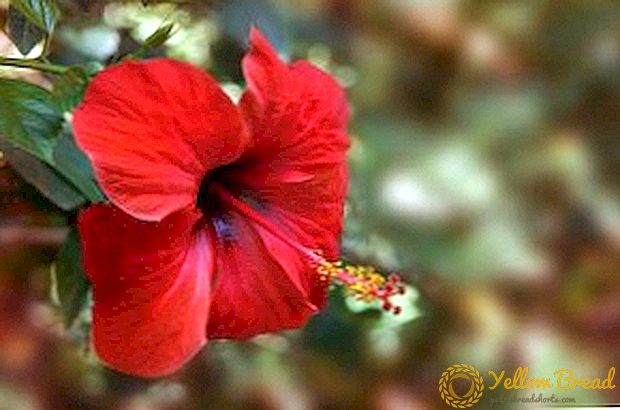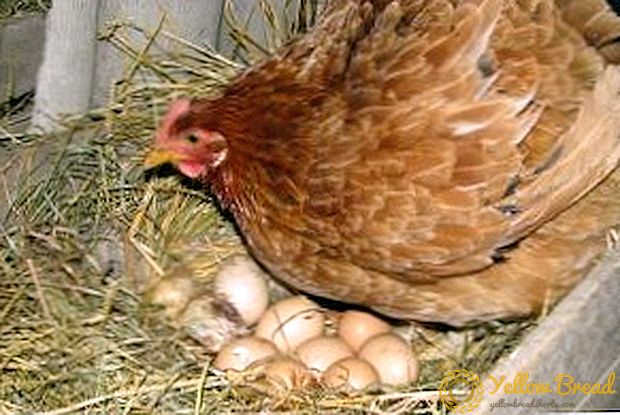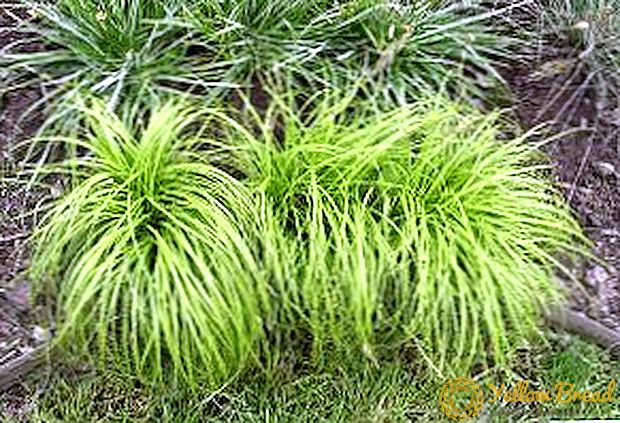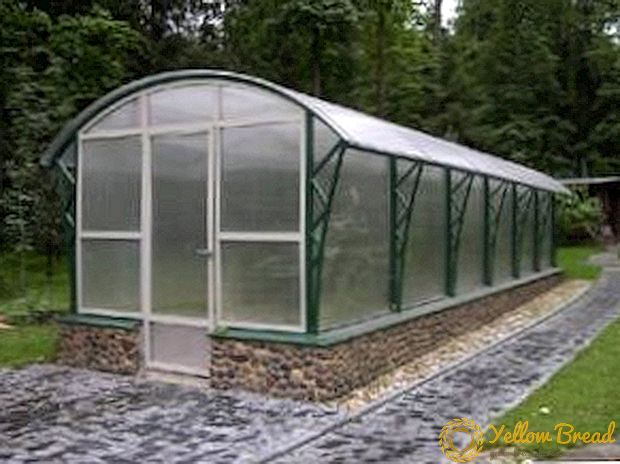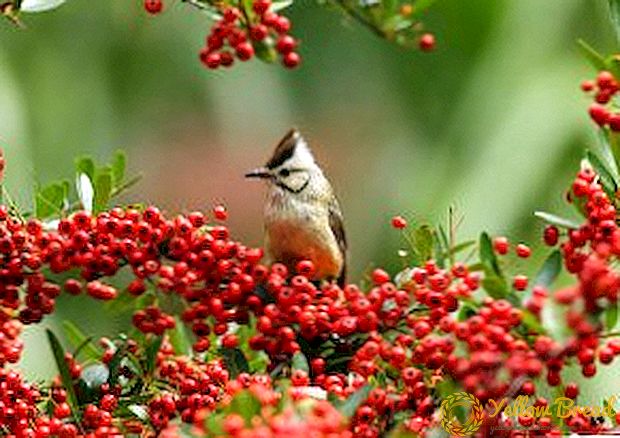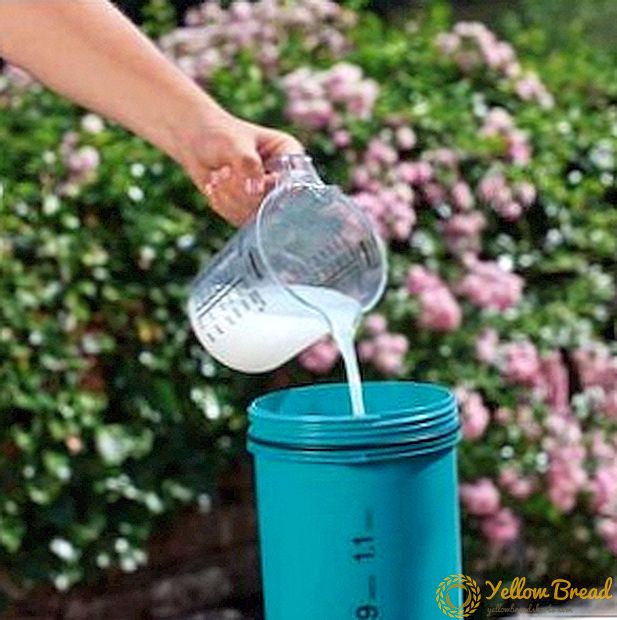 Cucumber is one of most popular cultures which today are grown by gardeners. By chemical composition, fruits are 95% water, and the rest is carotene, vitamins, macro- and microelements. Today, there are many varieties of cucumbers, each of which differs in the shape of the fruit, the thickness of the skin, and even the height of the plant itself. One of the popular varieties is the "Competitor" cucumber.
Cucumber is one of most popular cultures which today are grown by gardeners. By chemical composition, fruits are 95% water, and the rest is carotene, vitamins, macro- and microelements. Today, there are many varieties of cucumbers, each of which differs in the shape of the fruit, the thickness of the skin, and even the height of the plant itself. One of the popular varieties is the "Competitor" cucumber.
- Cucumber "Competitor": the history of breeding
- Description of the variety
- Pros and cons varieties
- Sowing cucumber seeds in the garden
- Seed preparation for planting
- Optimum time for sowing
- The choice of place and the role of predecessors
- Preparation of beds
- Optimal sowing pattern
- Features of care and cultivation agrotechnics
- Preventive measures against pests and diseases
- Shrub formation
- Watering, weeding and loosening the soil
- Fertilization
- Harvesting and storage of cucumber harvest
Cucumber "Competitor": the history of breeding
This variety was bred in 1980 in the Crimea. Initially, varieties of cucumbers of the Crimean selection were used for cultivation in the southern regions of the Russian Federation, but now the geography of cultivation has increased significantly.The “competitor” is an early ripening cucumber: 1.5 months pass from planting to harvest. Fruits reach a mass of 100 g, with excellent taste. 
Description of the variety
Cucumber "Competitor" is considered an example of a successful variety, which has a high quality indicator and receives only positive feedback. The variety is characterized by the following indicators:
- The average ripening period is 50 days.
- On the plant there are heterosexual flowers.
- Ovary is single, inflorescences are pollinated by bees.
- You can grow in open and closed ground.
- Liana grows up to 2 m.
- The fruits have an oval-cylindrical shape. Their surface is large. The length reaches 10 cm.
- Cucumbers can be consumed fresh or canned.

Pros and cons varieties
Cucumber "Competitor" have characteristics that are expressed in the following virtues:
- High seed germination rate.
- Good survival rate of seedlings after transplantation.
- Resistance to powdery mildew.
- Enough long term fruiting.
- Seed material can be prepared independently.
- rapid spoilage of fruits;
- skin thickening;
- the occurrence of cracks in the cucumbers;
- loss of flavor.

If there is a lack of moisture, a bitter taste may appear.
Sowing cucumber seeds in the garden
Sowing the seeds of these vegetables on the beds for a decent harvest should be carried out in compliance with some rules. Only considering them, you can not worry about wasting time and money.
Seed preparation for planting
Last year's billet can be sown in dry form. It is proved that cucumber seeds can be sown for 6 years. Preparation of cucumber seeds for sowing begin with keeping them in salt water for 10 minutes. Next, the surfaced seeds are thrown away, and the rest are washed and filled with a solution of potassium permanganate for a day. After all this, the seeds can be sown or germinated. 
Optimum time for sowing
For a good harvest, the best period for sowing seeds is the end of May - the beginning of June. In the regions in the south, you can begin work in mid-April.
The choice of place and the role of predecessors
To get a good harvest every year it is recommended to constantly choose a new place. One of the ideal places for growing cucumbers is the garden after tomatoes, onions or potatoes, as well as any cabbage. It is not recommended to plant cucumbers after carrots or beans. In the autumn, it is recommended to fertilize the soil with mineral fertilizers or organic matter, and in the spring it is necessary to dig up. For support, you can use not only sticks or trellis, but also other plants - for example, corn.
Preparation of beds
Cucumber "Competitor" for good yields are recommended to be planted only in the previously prepared land.It should be heated to 15 ° C, while rich in humus and other nutrients. Most often, fertilizers are applied in May: per 1 sq. M. It is recommended to make at least 10 kg. Use compost, manure, urea or potassium sulfate.

Optimal sowing pattern
Cucumbers are sown for growing on the trellis. For easy care, use the following scheme: sow the seeds in two rows, moreover, the distance between them and between future bushes should be 20 cm. Trellis buried at a distance of 1 m.
Features of care and cultivation agrotechnics
Cucumber "Competitor" unpretentious in growing and resistant to many diseases - such as powdery mildew and bacterial spotting. The main rules of quality care are:
- timely watering;
- weeding;
- the introduction of special additives;
- loosening the land.

Since this variety is highly branched and high, suspended structures or poles are recommended for creating conditions for uniform growth.It is easy to care for cucumbers "Competitor", knowing some biological features of the plant:
- The soil should be light, with the necessary amount of mineral and organic substances.
- The beds are prepared immediately after the previous harvest.
- When digging in the spring, it is important to add organic matter. It is better to opt for manure or biohumus with phosphorous components.
- Additional feeding is carried out during the formation of buds and at the stage of budding.
- For irrigation it is better to use irrigation.

Preventive measures against pests and diseases
Growing cucumbers "The Competitor" does not end with planting and care: it is important that the plants and crops are safe from pests and diseases. Any treatment is carried out early in the morning or late in the evening to avoid sunburn.Prevention of infections and fungus after the appearance of the first two leaves is carried out with the help of copper-containing preparations. For high-quality processing using Bordeaux mixture or copper oxychloride. To combat the tick or aphids apply 10% solution of karbofos.
Shrub formation
When the "Competitor" is grown without thickening, the liana is not formed. However, in other conditions it is important to do it. It is recommended to remove the first processes immediately after the formation of the first cucumbers. Subsequent bind to the base along with the main stem. Additionally, the bush is clamped after forming 5 sheets.
Watering, weeding and loosening the soil
Cucumber "Competitor" when grown from seed needs to be watered from the early days - it is also important as the state of the earth, temperature and lighting. Water for irrigation should be no colder than 18 ° C. Immediately after its absorption, it is recommended to soil the soil. Like other vegetables, cucumbers do not like the presence of grass, which takes nutrients and moisture from the ground. Therefore, it is important to carry out weeding in time or pull out small weeds together with the roots. Loosening the soil is also necessary - it will help more air and nutrients to penetrate the earth. 
Fertilization
Many gardeners, citing good fruiting, do not see the point in feeding cucumbers of this variety. However, in order not to harm the soil, it is recommended to do it. The first dressing is done with the help of fresh chicken manure, cow dung and tincture of green grass. You can also make mineral fertilizers, such as urea or superphosphates. The second time the land is fertilized with green grass or mineral fertilizers. Can also be carried out foliar top dressing using the following composition: 10 g of boric acid and 100 g of sugar, which is added to 1 liter of hot water.
Harvesting and storage of cucumber harvest
Harvesting this variety of cucumber is no different from many others. During mass fruiting, such manipulations are carried out every 2 days. Kids for preservation are collected twice a day - in the morning and in the evening. To increase the shelf life of the fruit is recommended to cut with scissors, while it is important to leave the stem of the stem.Before placing cucumbers in the refrigerator for storage, it is important to leave them in the open air for some time, but in the shade.
Today, the competitor variety of cucumbers is in demand by vegetable growers. As time shows, with the right care, cucumbers grow the right size and excellent taste. In addition, the advantage is that high-quality collection of seed material can be carried out independently.

